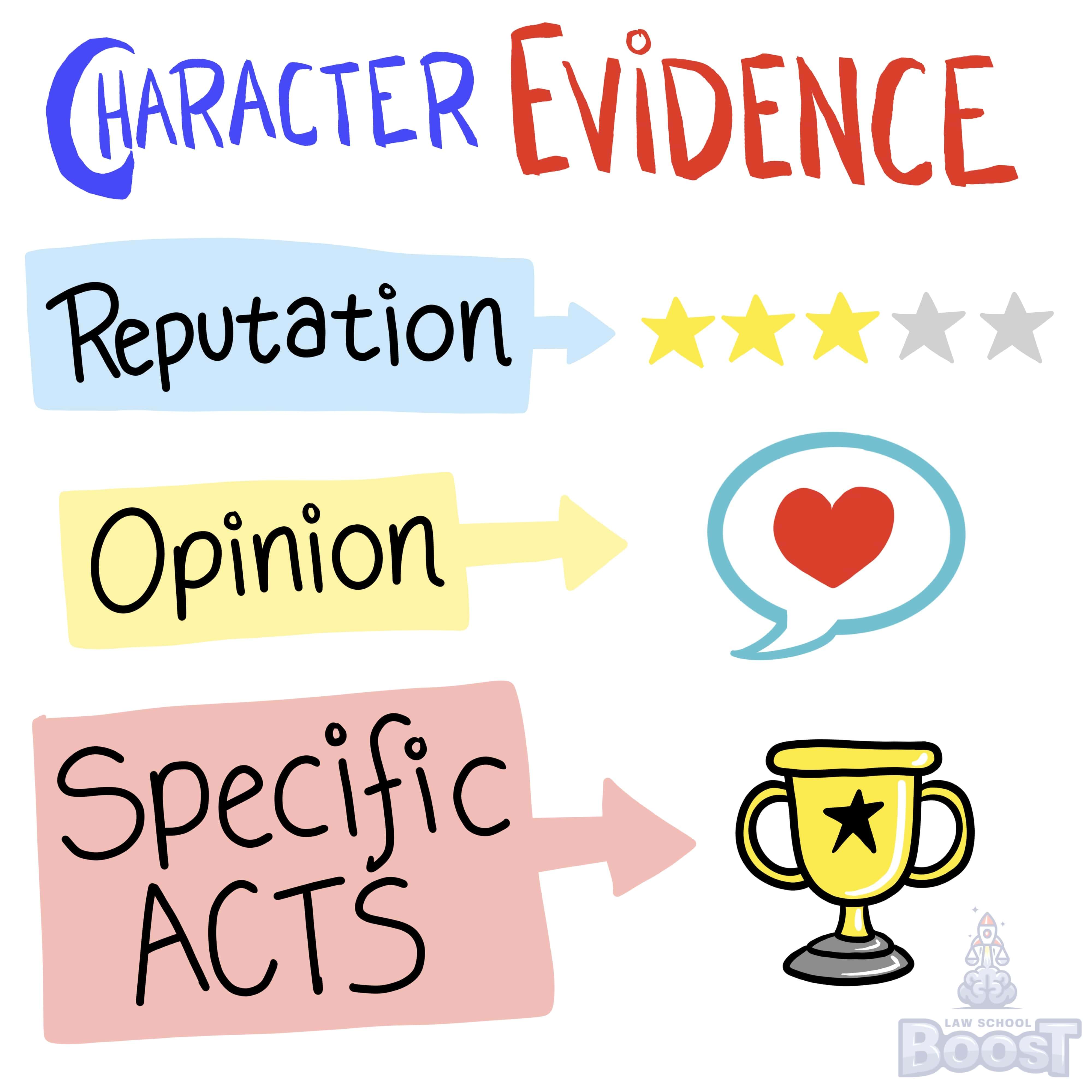🦅
Federal Evidence • Character Evidence
EVID#071
Legal Definition
If the defendant first offers evidence of the victim's bad character (by reputation or opinion), the prosecution can offer evidence of the victim's good character or the defendant's same character trait (by reputation, opinion, or specific acts).
Plain English Explanation
If the defendant first presents evidence (sometimes called "opening the door") showing the victim had a bad character, the prosecution can respond by presenting evidence showing either (1) the victim had a good character, or (2) the defendant had the same bad character trait. For example, if the defendant says the victim had a history of violence, the prosecution can rebut this by presenting testimony showing the victim actually had a peaceful reputation. Alternatively, the prosecution could present evidence showing the defendant also had a history of violence, undermining their claim that the victim's past was relevant. The purpose of the rule is to prevent one-sided smear campaigns against victims and to allow all relevant evidence to evaluate the defendant's actions.
In other words, it's like when you were a kid and at dinner your sibling accused you of breaking the cookie jar. You weren't going to say anything, but now your sibling opened the door and you have to defend yourself, so you can go with either "Me? I never break stuff. I'm the good child who cleans their room and brushes their teeth." or "Dude, wtf are you talking about, you broke the last 3 cookie jars trying to get your big hand in there and always blame me."
In other words, it's like when you were a kid and at dinner your sibling accused you of breaking the cookie jar. You weren't going to say anything, but now your sibling opened the door and you have to defend yourself, so you can go with either "Me? I never break stuff. I'm the good child who cleans their room and brushes their teeth." or "Dude, wtf are you talking about, you broke the last 3 cookie jars trying to get your big hand in there and always blame me."
Hypothetical
Hypo 1: Bob is on trial for assaulting Sam. In court, Bob's lawyer tries to prove that Sam has a history of starting fights, suggesting Sam started the fight with Bob. Result: The prosecution counters by showing evidence of Bob's past aggressive behavior in similar situations, indicating that Bob is more likely to have started the fight.
Hypo 2: In a theft case, Bob claims that the victim Sam is known for being dishonest and might have staged the theft. Result: The prosecution rebuts this by presenting evidence of Sam's good reputation for honesty, focusing on Sam's character to counter Bob's claim.
Hypo 3: During a trial, Bob argues that victim Sam, who he is accused of defrauding, has a reputation for being gullible and easily fooled. Result: The prosecution responds by bringing up past instances where Bob tricked others in similar schemes, suggesting Bob's own deceptive nature.
Hypo 4: Bob is accused of a road rage incident against Sam. In defense, Bob presents evidence that Sam has been aggressive in traffic before. Result: The prosecution counters by highlighting Bob's history of road rage, shifting the focus to Bob's character to challenge the defense's narrative.
Hypo 2: In a theft case, Bob claims that the victim Sam is known for being dishonest and might have staged the theft. Result: The prosecution rebuts this by presenting evidence of Sam's good reputation for honesty, focusing on Sam's character to counter Bob's claim.
Hypo 3: During a trial, Bob argues that victim Sam, who he is accused of defrauding, has a reputation for being gullible and easily fooled. Result: The prosecution responds by bringing up past instances where Bob tricked others in similar schemes, suggesting Bob's own deceptive nature.
Hypo 4: Bob is accused of a road rage incident against Sam. In defense, Bob presents evidence that Sam has been aggressive in traffic before. Result: The prosecution counters by highlighting Bob's history of road rage, shifting the focus to Bob's character to challenge the defense's narrative.
Visual Aids

Related Concepts
How do California's rules differ from the Federal rules when it comes to introducing character evidence in a case involving sexual assault or child molestation?
How is the process of offering character evidence generally handled in California?
How is the process of offering character evidence generally handled under the Federal rules?
In California, if the defendant offers evidence of a victim's violent character, what can the prosecution offer to rebut?
In California, when can prior acts of domestic violence or elder abuse be admissible?
In cases involving sexual assault, when may a defendant introduce specific act evidence?
What are habit and custom evidence?
What is character evidence?
When assessing character evidence, what are non-character purposes?
When is character evidence admissible in civil cases?
When is character evidence admissible in criminal cases?
When is character evidence admissible in homicide cases involving self defense? What kinds are admissible?
When is evidence of prior sexual assault or child molestation admissible?


